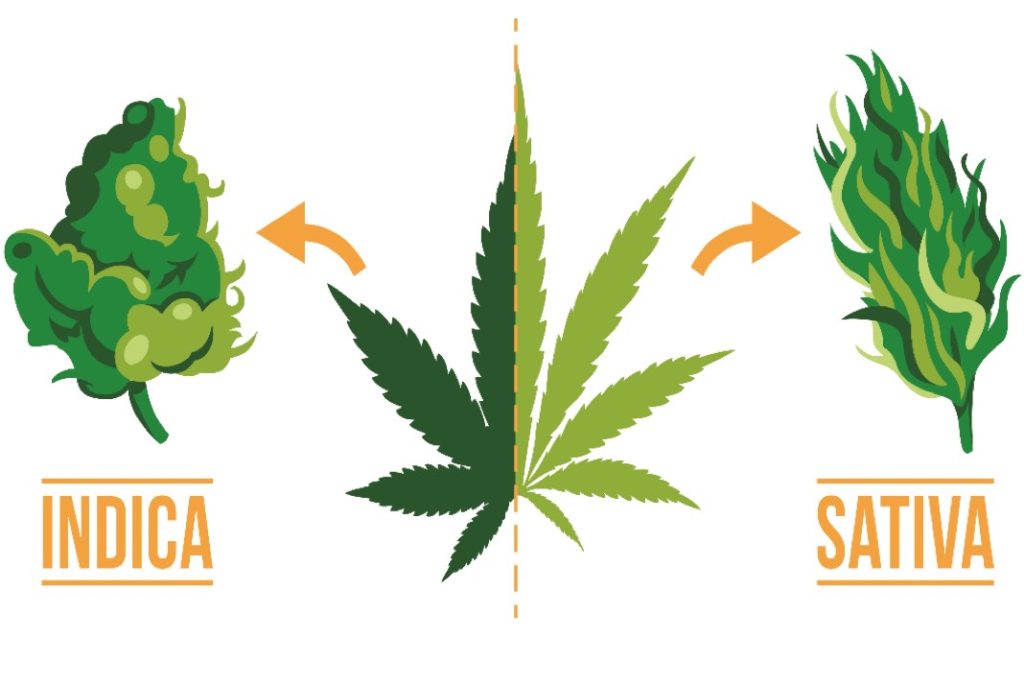A Lot of Weed Facts You’ve Been Told Are BS
The world of cannabis is a fantastic place full of ample potential for an array of consumers and the community around it. But while the plant truly holds a world of positives, many misconceptions, myths and misnomers continue to swirl about it. In doing so, it breeds uncertainty in a long-stigmatized place. If we want to see the plant move further in the public, we have to truly understand it.
In some cases, the misinformation has become so rampant that it now seems factual. These are some of the more egregious examples:
The “Facts” Do Lie
Sativa Uplifts and Indica Puts You “In Da Couch”

This might be the most egregious myth in cannabis today. It’s so rampant that it persists across the industry, including at many dispensaries where customers should receive accurate product information.
For decades, people have been led to believe that sativa strains provide an energy boost, while indicas offer sedation and sleep. While this can be true in certain strains, sativa and indica were never intended to classify effects. The truth is that each strain has its own unique results, meaning you cannot trust the indica and sativa distinctions.
What you can trust indica and sativa classifications for is the plant structures. As 18th-century researchers noted, cannabis sativa plants are often taller and thinner in appearance. Whereas indica plants tend to be more densely packed, bushy, and shorter in structure. If anyone tries to tell you that indica and sativa cover anything else, they’re wrong.
The Higher The Potency, The Better The Quality
THC potency is often the go-to metric among newcomers and casual cannabis consumers. In far too many minds, it is believed that the greater the percentage of THC found in the plant, the more quality the product is. In reality, THC is just one indicator of the overall quality of the plant.
Don’t disregard THC altogether. But when it comes to assessing quality, the only time THC percentage should be the only factor, is when dealing with an isolate product. In most cases, consumers won’t be using an isolate. Instead, they’ll be working with cannabis flower or products derived from it, including vape cartridges, edibles, topicals, and various other options. Most of these products will contain the full spectrum, or whole plant profile.
In that case, it is wise to assess the entire profile of the plant. Depending on the outcome and effect you are looking for, you may need to find a product rich in cannabinoids like CBD, CBN, THCA or many others–as each of these compounds is regarded for delivering specific effects. Be on the lookout for terpene profiles as well. These plant compounds play a critical role in determining effects as well as the flavor and aroma of the strain.
Even if you still want to focus solely on THC after eating this entry, do yourself a favor and be suspicious of the number you see on a package. For years, allegations of labs and brands coordinating to inflate numbers have persisted. Check out my recent interview with upstate New York grower Dr. Dank to learn more.
Holding The Smoke In Makes You Higher

This bit of misinformation has waned over the last half a decade or so. However, many consumers still think holding in their smoke will increase the effects felt. Instead, it is suggested that holding in weed smoke does nothing to improve the effects, but may increase the tar and toxins taken into your lungs.
Coughing Gets You Higher
There’s an old saying that some still hold true: “You gotta cough to get off.”
What some think is helping improve their high is just a reaction from internal irritation and/or consuming tar and toxins.

Even if it isn’t contaminants causing the cough, cannabis can trigger a coughing fit due to lung and throat irritation. When smoke is consumed, it begins to irritate our airways. In turn, our nerves trigger a cough, just as you would when any other type of smoke is inhaled. The best way to avoid coughing is to take your hits and blow them out shortly after–or don’t smoke at all.
The Weed Industry is Lucrative
The legal cannabis industry is poised to generate billions for numerous states in the coming years. States like Missouri have boomed, generating $1 billion in sales in just three months of business. In Canada, the country generated CA$1.5 billion in cannabis taxes and profits between 2021 and 2022.
Those positive figures may lead some to believe that cannabis is profitable or lucrative. That isn’t the case at this time. In the US, cannabis businesses face significantly higher costs of operating. These higher costs often stem from federal tax regulations, namely tax code 280E, that consider cannabis an illegal product. As such, operators are not able to expense standard business costs. Coupled with various other struggles ranging from booming illegal market sales to product quality concerns, companies struggle to break even in many cases.
Cannabis Cures All

Cannabis has been part of medical literature for thousands of years, dating back to ancient practitioners across the globe, notably in Chinese pharmacopeia. Its inclusion continued up until the prohibition era began. Even then, scores of practitioners and herbalists worldwide continued suggesting the plant could help with various ailments–with many patients heeding their advice. With plant prohibition now eroding, many are beginning to discover how cannabis may help with conditions and symptoms ranging from insomnia to anxiety to chronic pain to epilepsy.
While the plant has great medical potential, it is not a panacea. Many people feel relief when using cannabis–but that isn’t the result for every person. In some cases, cannabis provides no noticeable effects–and some conditions, such as schizophrenia, may experience adverse effects. And even if a condition is expected to benefit from cannabis, every person reacts differently to cannabis–making it difficult to say how each person will or won’t respond to cannabis treatments.
Do Your Research
A reasonable degree of misinformation has swirled about the cannabis space for decades. Do yourself a favor and research the plant more on your own. An array of resources will help you, including lab studies, articles, news reports, interviews, talking with experts and many more. And never forget that the best way to learn about the plant is by getting your hands on it. Whenever legally allowed, buying, consuming, growing and producing can all help you best understand how this magnificent plant works.







